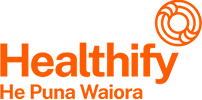Wishing everyone happy holidays and a joyful New Year from the Healthify team. Don't forget to Slip, Slop, Slap and Wrap!
Tampons
Answers to questions you might have about using tampons safely
Key points about using tampons safely
- Tampons are tightly packed tubes of cotton inserted into your vagina to absorb the blood from a menstrual period.
- They come in different sizes (larger ones can absorb more) and some have a cardboard applicator to help you put them in the right place more easily.
- They are safe to use as long as you change them every 4 to 6 hours. Use different protection at night.
- If you have any symptoms of toxic shock (fever, vomiting, diarrhoea, dizziness or a rash) during or soon after your period, get help quickly.

Tampons are made of cotton that’s been tightly packed into a cylinder shape. You can insert the tampon into your vagina to absorb the blood that comes out when you have your period. They have a string at the end which stays outside your vagina. When you want to remove the tampon you pull gently on the string. Generally the fuller it is, the easier it will slide out.
Some tampons are just the tampon and string, others come with a cardboard tube around them, called an applicator. They look a lot bigger than the non-applicator types. That’s because the tube is made up of 2 tubes, one smaller than the other. The larger end has the tampon inside and once you have inserted the tube into the opening of your vagina, you push the smaller tube inside the larger one and that pushes the tampon up into your vagina.
Anyone having a period can use a tampon – they come in different sizes to suit different age groups and different amounts of bleeding. If you want to use them from when you first get your period you may want to use a slim one (or one specially designed for young people) until you get used to putting them in and can figure out how much protection you need.
The bigger sizes absorb more. Once you get used to your period, and know when it’s likely to be heavy or light, you can choose which size to use each time you change it. If you prefer to always use a smaller one, you can use a pad and/or period underwear for extra protection in case there’s a leak!
Wash your hands first.
Remember that your vagina slopes up and back towards the small of your back, it doesn’t go straight up. If you try to push your tampon straight up (or pull the string straight down when removing it) it’s likely to be uncomfortable as it will dig into the wall of your vagina. If you’re not sure about the angle, try using a clean finger first to see where your vagina is and how it slopes. You can also use a mirror to help you see your vagina and where to put your tampon.
Once your hands are clean, take the tampon out of its wrapper. You can stand or sit when inserting a tampon, whichever is more comfortable for you. You may find it helps to put one leg up on the side of the bath or a stool, or to squat. It may help to use your other hand to spread your labia apart. Your labia are the soft folds of skin on both sides of your vagina.
Relax! Gently push the tampon into your vagina, either with your finger or with the lower part of the applicator – it depends which type you’re using. Once it’s in place (high up in your vagina near your cervix) remove your finger or the cardboard applicator.
It should feel comfortable, you shouldn’t be able to feel it if it’s in the right place.

Image credit: Healthify He Puna Waiora
If your tampon is inserted properly it shouldn’t feel uncomfortable and shouldn’t feel like it’s going to fall out. If you’re aware of it, it probably isn’t in the right position. Take it out (gently) and try again with a fresh one. Make sure you push it well into your vagina. If you have trouble getting a non-applicator tampon in place, try a brand that has an applicator.
Using tampons is your choice. If you prefer not to, or have problems using them, there are several other options available such as pads, period underwear, menstrual cups and soft tampons (made of sponge material). Find out more about the different period products(external link) available in Aotearoa New Zealand.
No, you can’t push a tampon up beyond your vagina because your cervix stops it going too far. You should always be able to reach the string to pull your tampon out when it’s used. If you can’t find the string, wash your hands and then use your fingers to grasp the end of the tampon and pull it out.
Tampons should be changed at least every 4 to 6 hours. If you have a heavy flow, you’ll probably need to change it more often. If you find you're having to change it every 1 to 2 hours for any length of time, you may have heavy periods. Read more about what heavy periods are and how to manage them.
When you’re ready to take your tampon out, find the string and pull gently forward and down following the same angle as when you inserted it. It should slide out fairly easily.
Once you’ve taken the used tampon out, wrap it in toilet paper and place it in the special bin provided (in many school and public toilet cubicles) or in a rubbish bin. Don’t flush it down the toilet.
If you go to take your tampon out but can't find it, it can feel scary. First, take a deep breath. It's possible to forget you've already taken it out. It's also possible for a tampon that's soaked with blood to fall out while you're squeezing to do a poo, so look in the toilet bowl.
Sometimes a tampon can turn sideways at the top of your vagina near your cervix, especially if you forgot it was there and put another one in. If this happens, strain as if you were pooing (this makes your cervix move down closer to the outside) and try to use your finger as a hook.
If you can't get a tampon out for more than a day you might notice a watery black discharge and a strong smell. If this happens, make an appointment to see your nurse or GP and they will get the missing tampon out for you – they won't mind, it's part of their job.
Once you get used to them, tampons are very safe and convenient. Here are some things you can do to make sure you’re using them safely.
- Wash your hands really well before and after inserting or removing a tampon.
- Follow the instructions on the packaging to make sure you’re using them properly.
- If you have any concerns about putting a tampon in (it feels uncomfortable, you’re aware of it all the time or it slips out) get some advice from a parent, school nurse or other healthcare provider.
- Only use tampons when you need to, and make sure you take the last one out at the end of your period.
- Change your tampon regularly (every 4 to 6 hours). Never leave the same one in for longer than 8 hours.
- Use a different type of protection at night (eg, pad or period underwear) to make sure you don’t leave a tampon in for too long.
- Use the smallest one you can to manage your period flow.
- Contact a nurse or a doctor if you have any pain, unusual discharge, or fever when you’re using tampons.
- Know the symptoms of toxic shock syndrome and get help quickly if you develop them during or soon after your period:
- sudden high temperature (fever)
- vomiting (being sick)
- diarrhoea (runny poo)
- feeling dizzy or faint
- aches
- a rash.
Toxic shock syndrome is a very serious bacterial infection where toxins from the bacteria get into your blood. It’s very rare but it’s possible to get it from keeping a super absorbent tampon in for a long time. Read more about toxic shock syndrome.
References
- How do I insert a tampon?(external link) The Conversation, Australia, 2023
- The facts on tampons and how to use them safely(external link) FDA, US, 2025
- Popular period products and their pros and cons(external link) Sexual Wellbeing Aotearoa, NZ
- How to insert a tampon(external link) Kidspot, NZ
Credits: Healthify editorial team. Healthify is brought to you by Health Navigator Charitable Trust.
Reviewed by: Dr Emma Dunning, Clinical Editor and Advisor
Last reviewed:





